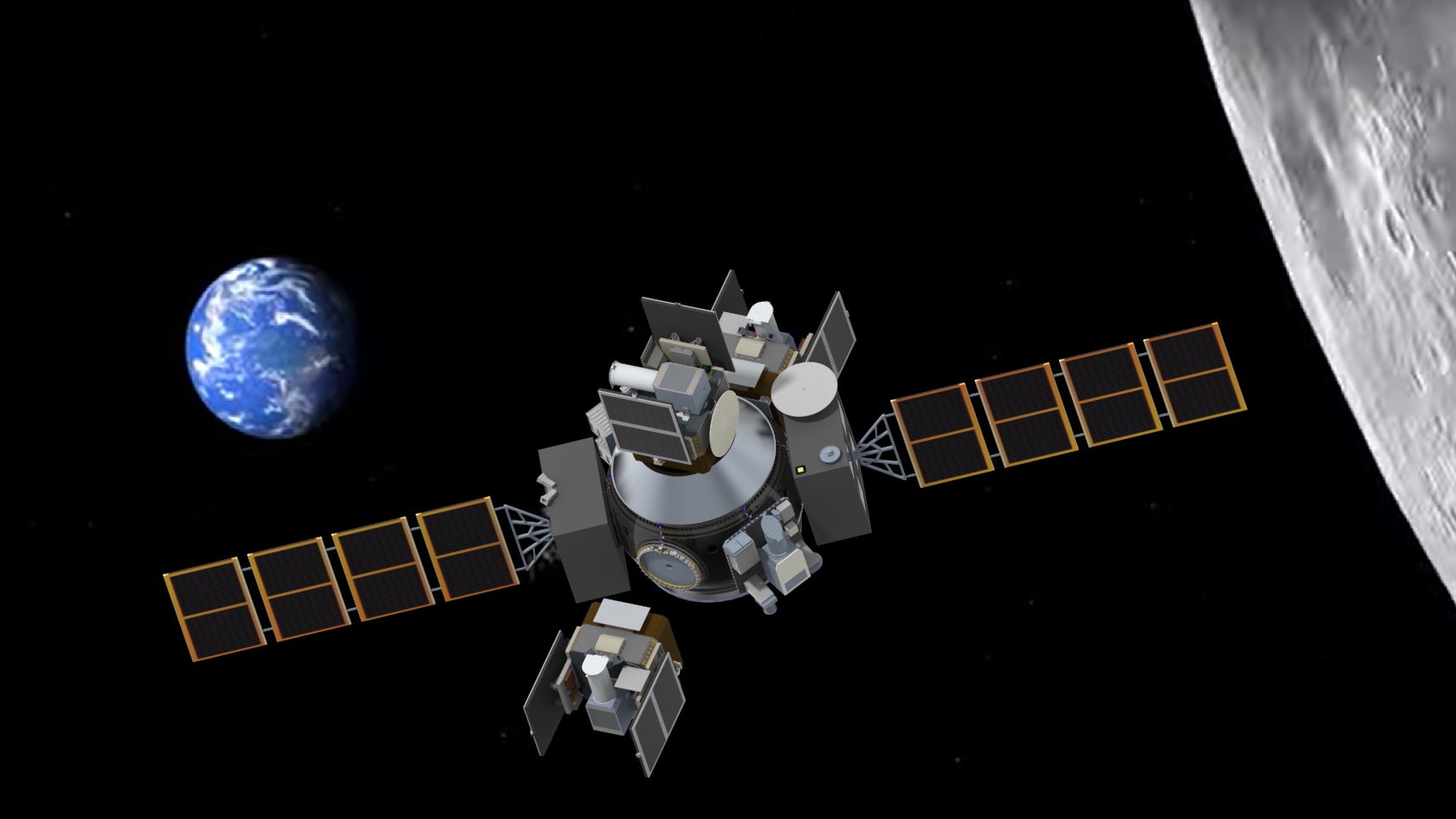WASHINGTON — Quantum Space is accelerating work on a transfer vehicle designed to take payloads to both geostationary orbit and cislunar space to support growing demand from commercial and government customers.
The Rockville, Maryland-based company, established last year to develop spacecraft called Scouts to provide services such as space domain awareness and communications between the Earth and moon, planned to deliver those spacecraft using a tug called Ranger. The company initially proposed to start flying Ranger in late 2025.
Steve Jurczyk, president and chief executive of Quantum Space, said in an interview the company was seeing greater interest in Ranger. “We somewhat accelerated the development plans for Ranger,” he said in an interview, with a first flight now planned earlier in 2025.
That demand is coming from customers looking to transport spacecraft to both GEO and cislunar space. Ranger is designed to place more than 1.5 metric tons into GEO and more than 2.5 metric tons into cislunar space, and features four ports for attaching spacecraft weighing up to 500 kilograms each.
“Ranger is a key part of our future to deliver Scouts,” said Phil Bracken, chief strategy officer of Quantum Space. “We assumed that other customers would like to use this service as well, and as we’ve started conversations with customers we have seen that demand signal.”
He said the design of Ranger is based first on what the company needs for its Scout vehicles. That includes a “high-thrust” propulsion system to reduce travel times either to GEO or cislunar destinations, something he said is of interest to other customers. “You don’t want to spend months and months spiraling out.”
In the near term, there is more interest in going to GEO, with a mix of government and commercial customers. Jurczyk said current interest in cislunar missions is coming from governments but expects that commercial demand will grow over time.
Work on Ranger is still in its initial phases as the company prepares for a preliminary design review, as well as ordering long-lead items. The company is also securing an integration and test facility in the Washington, DC, suburbs to produce both Ranger and Scout spacecraft.
“Our nominal plan is two vehicles per year right now,” Bracken said of production plans for Ranger, “but that can be adjusted to increase capacity as needed.”
The company is continuing development of its first Scout spacecraft, QS-1, that it announced in October. That spacecraft is carrying a space situational awareness payload provided by GEOST that Jurczyk said is nearing its critical design review. QS-1 is set to launch in late 2024.
Work on both Scout and Ranger is supported by a $15 million Series A round Quantum Space raised in December. Jurczyk said the company is working to raise an additional round of funding this year to continue work on both spacecraft.
That fundraising is more difficult than last year, which he attributed to broader economic issues like bank failures and high interest rates than issues specific to the space industry, like Virgin Orbit’s recent bankruptcy filing. “Raising capital has gotten more challenging.”
